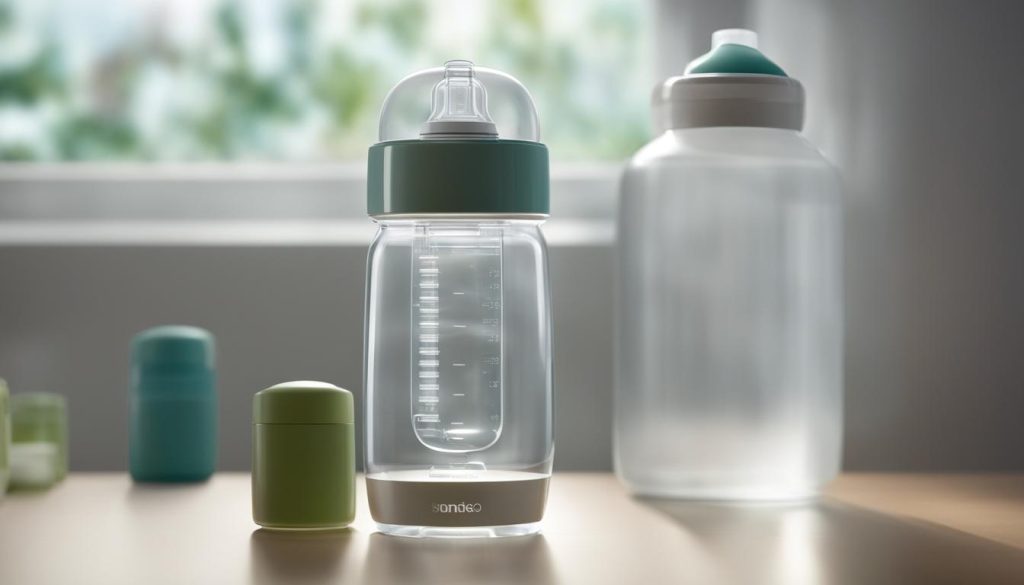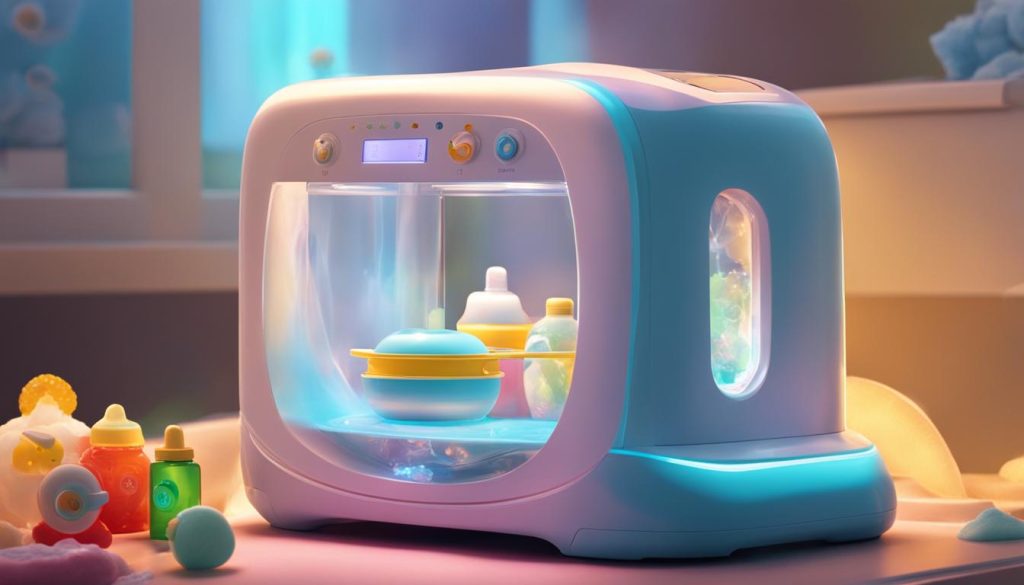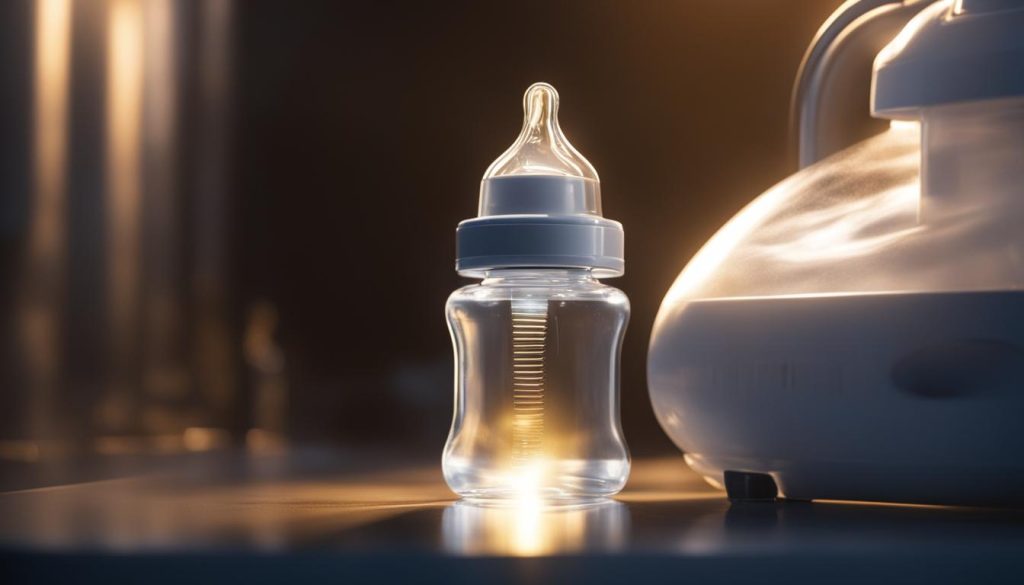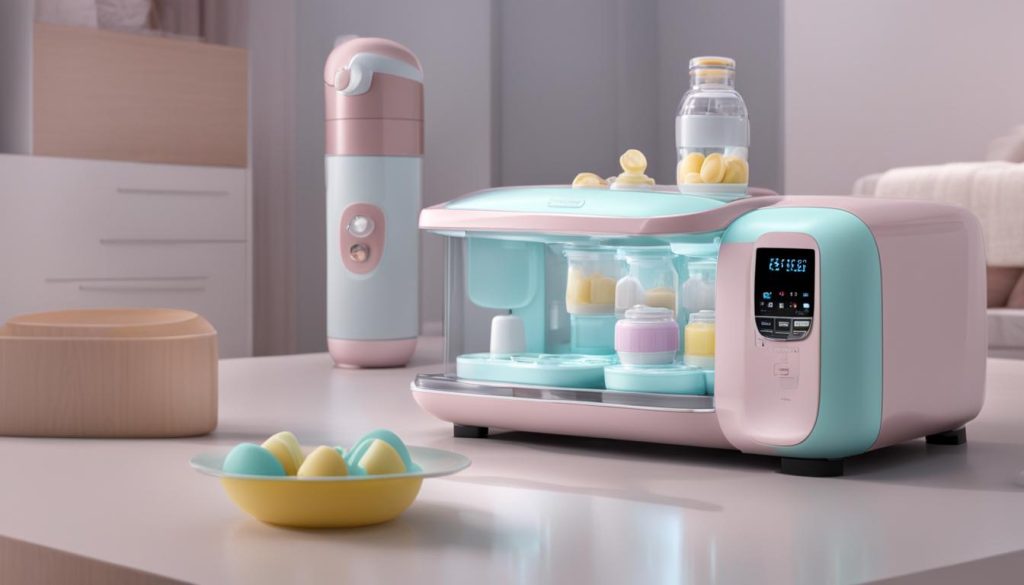Newborns and infants have under-developed immune systems and need to drink from clean bottles to avoid infections. Sterilizing baby bottles and accessories can help kill more germs than traditional cleaning. There are several recommended ways to sterilize bottles including using boiling water, microwavable bottle sterilizers, or electric steam sterilizers. It is no longer necessary to sterilize bottles after the initial sterilization, but sterilization can provide extra protection against germs.
Electric steam sterilizers, microwave sterilizers, and boiling are all effective methods of sterilization. It is important to thoroughly clean bottles and nipples before sterilizing them. Daily sterilizing of feeding items may not be necessary for older and healthy babies, but it may be recommended for the first three months of life, premature infants, or infants with weakened immune systems.
Types of Baby Bottle Sterilizers and Their Features
When it comes to keeping your baby’s feeding supplies clean and hygienic, a baby bottle sterilizer is an essential tool. There are several types of sterilizers available on the market, each with its own unique features and benefits. In this section, I will discuss the different types of baby bottle sterilizers and their key features to help you make an informed decision.
Electric Steam Sterilizers
Electric steam sterilizers are a popular choice among parents due to their convenience and effectiveness. These sterilizers plug into outlets and use high temperatures and steam to kill germs. They often come with separate compartments for bottles, nipples, and other accessories, allowing you to sterilize multiple items at once. Some electric steam sterilizers even have additional features like automatic shut-off and drying functions, making the sterilization process even easier.
Portable Baby Bottle Sterilizers
If you’re always on the go, a portable baby bottle sterilizer is a great option. These compact sterilizers are designed to be easily carried in a diaper bag, making them perfect for travel or outings. Portable sterilizers can use different sterilization methods, such as steam or UV light, depending on the model. Some even fit into a microwave for quick and efficient sterilization. With a portable sterilizer, you can sterilize your baby’s bottles wherever you are, ensuring a clean and safe feeding experience.
Choosing the Right Sterilizer
When choosing a baby bottle sterilizer, it’s important to consider your specific needs and preferences. Think about whether you’ll primarily be using the sterilizer at home or on the go. Consider the size and capacity of the sterilizer, as well as how easy it is to use and maintain. Look for additional features that may be important to you, such as automatic shut-off or drying functions. By carefully evaluating these factors, you can select the best baby bottle sterilizer for you and your little one.
| Sterilizer Type | Features |
|---|---|
| Electric Steam Sterilizers | – Plug into outlets – Use high temperatures and steam – Separate compartments for bottles, nipples, and accessories – Automatic shut-off and drying functions (some models) |
| Portable Baby Bottle Sterilizers | – Compact and easy to carry in a diaper bag – Various sterilization methods (steam, UV light) – Some models fit into microwaves for quick sterilization |
As you can see, there are different types of baby bottle sterilizers available, each catering to specific needs and preferences. Whether you opt for an electric steam sterilizer or a portable sterilizer, these handy devices will ensure that your baby’s feeding supplies are clean, germ-free, and ready for use.
Tips for Choosing the Right Baby Bottle Sterilizer
When it comes to choosing a baby bottle sterilizer, there are several important factors to consider. By taking into account your specific needs and preferences, you can find a sterilizer that meets your requirements and provides a hygienic feeding experience for your little one.
1. Determine Your Needs
First and foremost, think about how and where you will be using the sterilizer. If you plan on sterilizing bottles primarily at home, an electric steam sterilizer may be a suitable option. On the other hand, if you’re frequently on the go, a portable sterilizer that can be easily carried in a diaper bag might be more convenient for you. Consider your lifestyle and choose a sterilizer that fits your needs.
2. Size and Capacity
Another important factor to consider is the size and capacity of the sterilizer. Make sure it is large enough to accommodate the number of bottles and accessories you typically use. It’s also worth considering the space available in your kitchen or nursery for storing the sterilizer when not in use.
3. Ease of Use and Maintenance
Look for a sterilizer that is easy to use and maintain. Features such as intuitive controls, automatic shut-off, and drying functions can make the sterilization process more convenient. Additionally, check if the sterilizer is easy to clean and if any parts need regular maintenance or replacement.
4. Consider Additional Features
Some sterilizers come with extra features that can enhance the convenience and functionality of the sterilization process. For example, certain models have built-in timers or indicators to let you know when the sterilization cycle is complete. Others offer multiple compartments for sterilizing different types of bottles and accessories simultaneously. Consider these additional features and choose a sterilizer that aligns with your preferences.
5. Follow Manufacturer’s Instructions
Lastly, it is crucial to read and follow the manufacturer’s instructions for proper use and maintenance of the sterilizer. This will ensure that you are using the sterilizer correctly and effectively. It’s also important to note any specific recommendations or precautions provided by the manufacturer for sterilizing newborn bottles.

By considering these tips, you can make an informed decision when choosing a baby bottle sterilizer. Remember, the right sterilizer can provide peace of mind by ensuring a clean and hygienic feeding environment for your little one.
The Effectiveness of Baby Bottle Sterilizers
Baby bottle sterilizers play a crucial role in ensuring a clean and hygienic feeding environment for infants. By effectively killing harmful bacteria, these sterilizers offer parents peace of mind and help protect their little ones from infections. One popular type of sterilizer is the UV baby bottle sterilizer, which utilizes ultraviolet light to eliminate bacteria.
UV baby bottle sterilizers are known for their effectiveness in killing germs. The ultraviolet light used in these sterilizers has been proven to have antimicrobial properties, making it a reliable method for thorough sterilization. With just a few minutes of exposure to the UV light, the sterilizer can eliminate up to 99.9% of bacteria on the bottles and accessories.
These sterilizers are not only effective but also convenient to use. Many UV baby bottle sterilizers are compact in size, allowing parents to easily fit them into their kitchen or nursery. Additionally, the sterilization process is quick and hassle-free, making it suitable for busy parents. Simply place the bottles and accessories inside the sterilizer, activate the UV light, and let it work its magic.
| Benefits of UV Baby Bottle Sterilizers |
|---|
| Efficiently kills bacteria |
| Convenient and easy to use |
| Compact size for easy storage |
| Eliminates the need for harmful chemicals |
| Safe and eco-friendly |
It is important to note that while baby bottle sterilizers, including UV sterilizers, are highly effective, they are not necessary for healthy infants with access to clean water sources and strong immune systems. However, for parents who want to ensure the highest level of cleanliness and protection for their babies, a UV baby bottle sterilizer can be a valuable addition to their routine.
“UV baby bottle sterilizers provide an extra layer of protection by efficiently killing bacteria on feeding items. They are a safe and convenient option for parents who prioritize cleanliness and want to minimize the risk of infections.” – Pediatrician Dr. Emily Thompson
Expert Advice on Using Baby Bottle Sterilizers
As an expert in infant care, I strongly recommend sterilizing your baby’s feeding items at least once a day, especially during the first three months of their life. This is particularly important for premature infants or those with weakened immune systems. Sterilizing bottles and nipples can help eliminate harmful bacteria and ensure a hygienic feeding environment.
Before sterilizing, it’s crucial to thoroughly clean the bottles and nipples. This can be done by using warm, soapy water and a bottle brush to remove any residue. Rinse them thoroughly to ensure no soap remains. Following the manufacturer’s instructions, choose the appropriate sterilization method for your baby bottle sterilizer.
Once the sterilization process is complete, it’s essential to store the sterilized bottles and equipment in clean containers with lids. This will help maintain their sterility until they are ready to be used. Make sure to keep the containers in a clean and dry area to prevent contamination.
Furthermore, it’s worth noting that babies should gradually transition from bottles to sippy cups by the age of one. This is an important step in their development and oral health. By gradually weaning them off bottles and pacifiers, you can promote healthy habits and reduce the risk of dental issues in the future.
FAQ
How often should I sterilize my baby’s bottles?
It is recommended to sterilize feeding items at least once a day, especially for the first three months of a baby’s life, premature infants, or infants with weakened immune systems.
Do I need to sterilize bottles for older, healthy babies?
Daily sterilizing may not be necessary for older and healthy babies, but it is recommended for the first three months of life, premature infants, or infants with weakened immune systems.
How should I clean bottles before sterilizing them?
Thoroughly clean bottles and nipples before the sterilization process by using hot soapy water and a bottle brush. Rinse them well before sterilizing.
What are the different types of baby bottle sterilizers available?
There are electric steam sterilizers, microwavable bottle sterilizers, and portable sterilizers available on the market. Each type has its own unique features and benefits.
How do electric steam sterilizers work?
Electric steam sterilizers use high temperatures and steam to kill germs. They often come with different compartments for bottles, nipples, and other accessories.
Are portable baby bottle sterilizers convenient for travel?
Yes, portable baby bottle sterilizers are compact and can be easily carried in a diaper bag. They can use various sterilization methods, such as steam or UV light.
What factors should I consider when choosing a baby bottle sterilizer?
Factors to consider include your specific needs, size and capacity of the sterilizer, ease of use and maintenance, additional features, and proper use and maintenance as per the manufacturer’s instructions.
Are UV baby bottle sterilizers effective?
Yes, UV baby bottle sterilizers use ultraviolet light to kill bacteria and are known for their effectiveness. They are often compact and easy to use.
When should I transition my baby to sippy cups?
It is recommended to transition babies to sippy cups by 1 year of age and gradually wean them off bottles and pacifiers.
How do proper cleaning and sterilization contribute to a safer feeding experience?
Proper cleaning and sterilization practices help kill harmful bacteria and ensure a hygienic feeding environment for infants, promoting their health and well-being.





